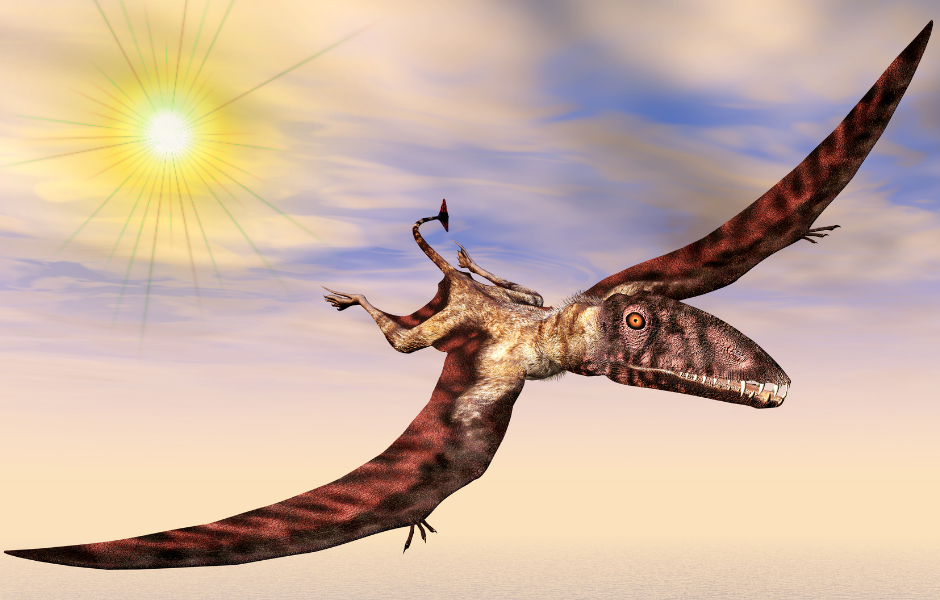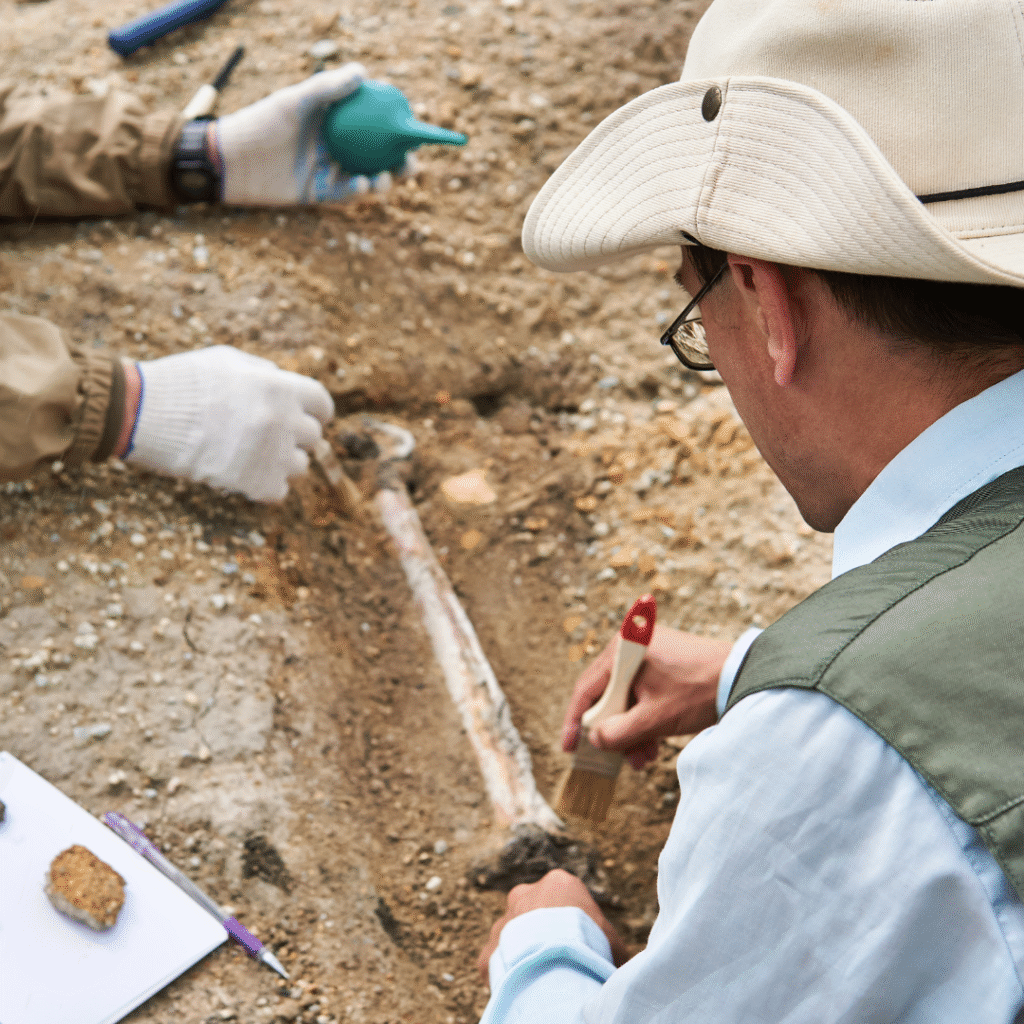
This children’s article, 200-million-year-old flying reptile discovered in Arizona, has been written for native English speakers and learners of English as a second or foreign language. It can help children build vocabulary, learn about prehistoric animals, and explore how scientists study the distant past. Written by Mark Pulley, a teacher and writer who creates fun and informative news articles for English learners.
A new ancient creature has been found in the USA
Scientists have discovered a new species of flying reptile that lived over 200 million years ago. This creature, called a pterosaur, soared through the skies even before the time of the dinosaurs.
The pterosaur was found in Arizona, USA, in a place called Petrified Forest National Park. Millions of years ago, this area was a riverbed. Over time, mud and ash covered the bones of animals, helping to preserve them as fossils.
The new species has a very special name: Eotephradactylus mcintireae. It means “ash-winged dawn goddess”, a name inspired by the volcanic ash that helped protect its bones for millions of years.
What did it look like?
Scientists used modern scanning technology to study the fossil, which included a long jaw filled with sharp teeth. The pterosaur was about the size of a seagull, with wings that folded by its sides. It had strong claws for catching prey, and its teeth showed signs of wear, suggesting it ate animals with hard, scaly bodies, like ancient fish.
A rare and exciting find
The fossil was found in rock that is around 209 million years old. That makes this the oldest pterosaur ever found in North America!
Pterosaur fossils are hard to find because their bones were thin and hollow, which means they often broke or disappeared before they could turn into fossils. This discovery helps scientists understand more about how animals were changing during the Triassic period, a time when Earth was one giant supercontinent called Pangaea.
What else did they find?
The pterosaur jaw is just one part of a whole collection of fossils found at the site. These include fish scales, teeth, bones, and even fossilised poo (called coprolites). Together, they give scientists a snapshot of life over 200 million years ago.
Some of the creatures found are now extinct, like giant amphibians and ancient crocodile relatives. But others, like frogs and turtles, still exist today.

Article vocabulary list
- Pterosaur – a type of flying reptile that lived during the time of the dinosaurs
- Fossil – the remains of a plant or animal that have turned into stone over time
- Volcanic ash – tiny bits of rock and dust from a volcano
- Prey – an animal that is hunted and eaten by another animal
- Triassic period – a time in Earth’s history about 250 to 200 million years ago
- Supercontinent – a massive piece of land made up of all Earth’s continents joined together
- Extinct – no longer existing
- Coprolite – fossilised animal poo
- Preserved – kept in good condition over time
- Species – a group of animals or plants that are similar and can have babies together
Comprehension questions
Just click the plus (+) to see the answer
1. Where was the flying reptile fossil found?
A) In the Amazon Rainforest
B) In Arizona, USA
C) In the Alps
Answer: B) In Arizona, USA
2. How old is the fossil?
Answer: Around 209 million years old
3. What is the name of the new pterosaur?
A) Tyrannosaurus rex
B) Eotephradactylus mcintireae
C) Triceratops magnus
Answer: B) Eotephradactylus mcintireae
4. Why are pterosaur fossils rare?
A) They lived deep in the ocean
B) Their bones were small and easily destroyed
C) They only lived for a short time
Answer: B) Their bones were small and easily destroyed
5. What does “coprolite” mean?
A) A flying dinosaur
B) A fossilised footprint
C) A fossilised poo
Answer: C) A fossilised poo

Mark is a writer and EFL teacher from England with eight years’ experience. He’s passionate about travel, sport (especially football), animals, nature, and history, and enjoys helping children explore the world through language and learning.




